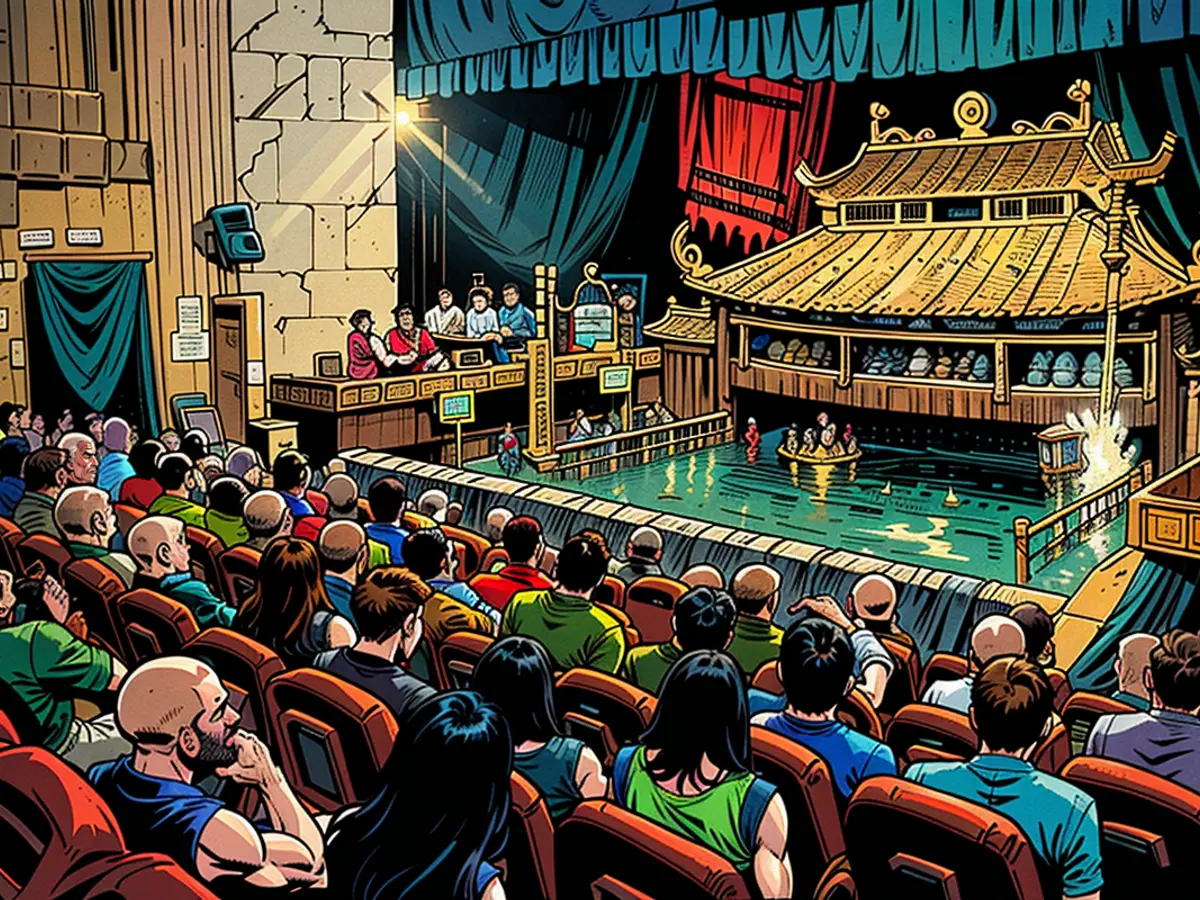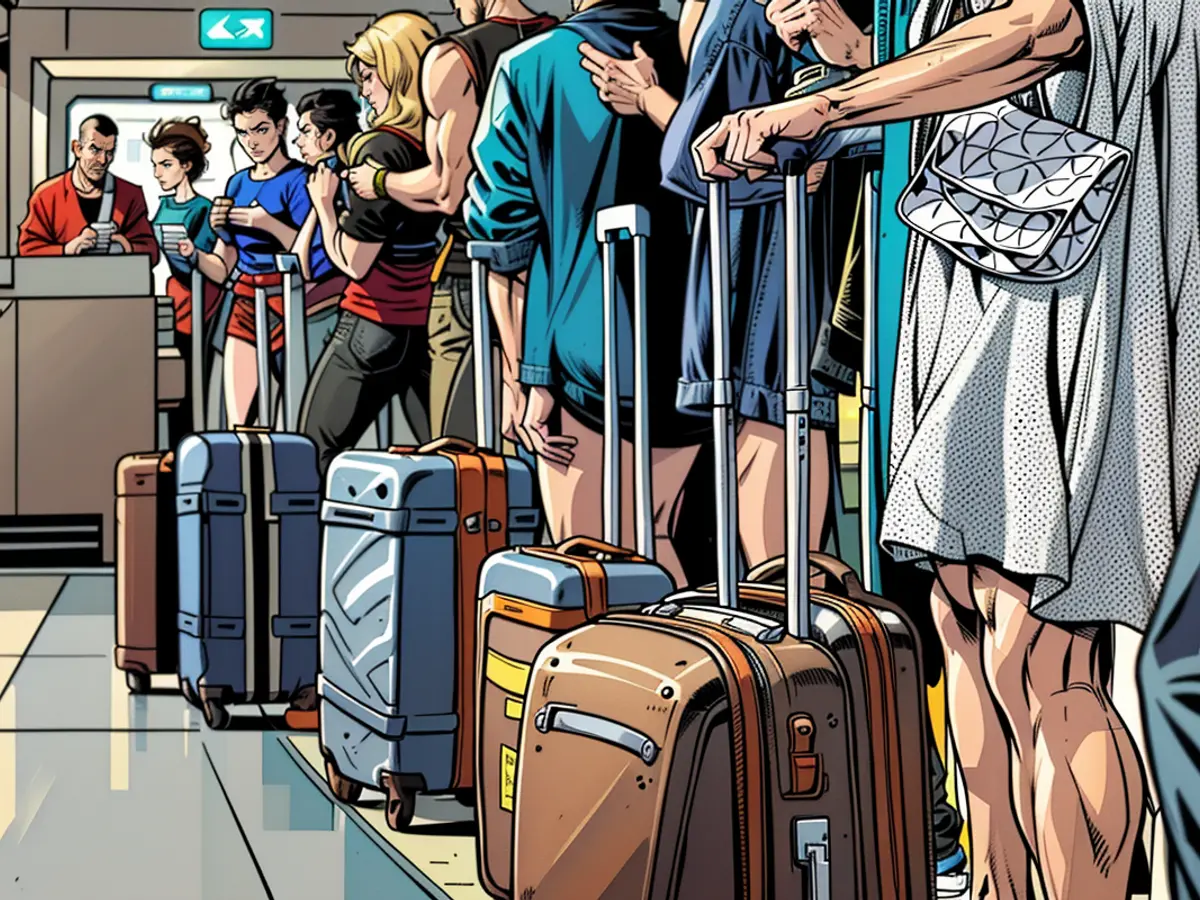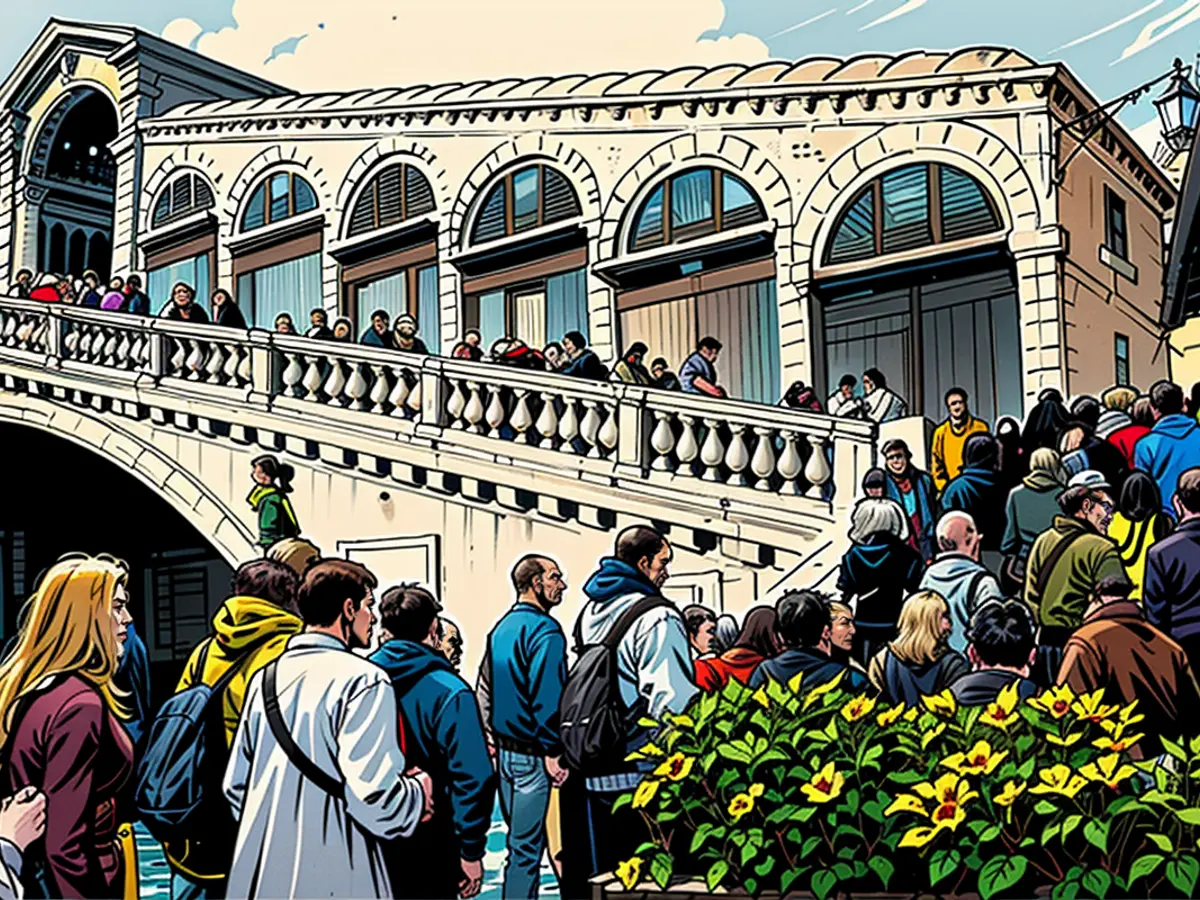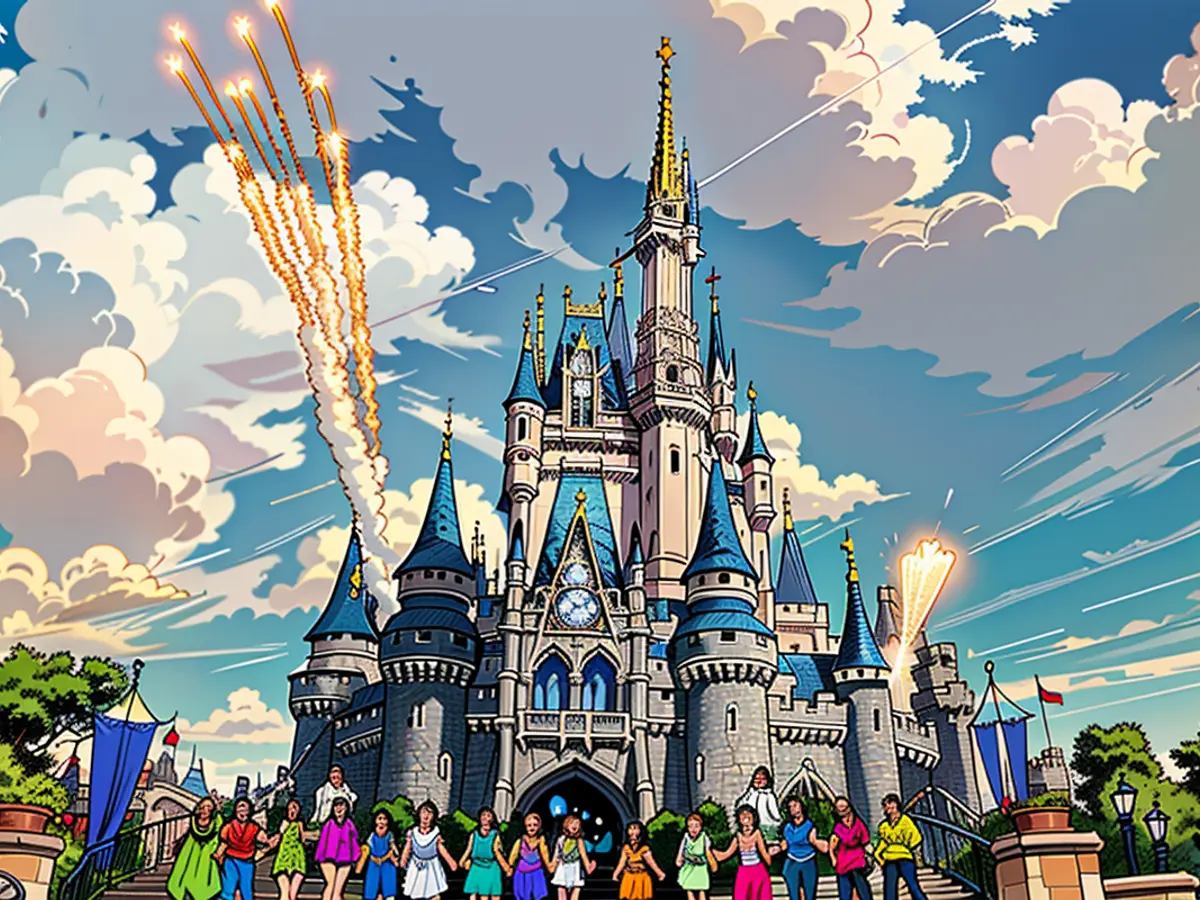Nestled in Vietnam's commercial core, experiencing the disorder is an integral part of the enjoyment.
This is Ho Chi Minh City, the business hub of a revitalized Vietnam. It's a metropolis that's obsessed with continual transformation. Beneath its facade, there's a profound affection and regard for tradition and history. You just need to know where to search.
As poet and novelist Graham Greene once stated, "You go to Vietnam, you comprehend a great deal in a few minutes. But the remainder is something that must be experienced."
Greene held a special knowledge. His seminal work "The Quiet American" remains a bestseller here, sold from nearly every souvenir shop you pass by. Greene made four journeys to the nation as a foreign correspondent between 1952 and 1955 and witnessed firsthand its shift from a French colony to an independent state, making him an astute observer of the American War, as it's commonly referred to locally, that soon followed.
This sense of sensing the past in the present strikes you instantly upon arrival. Although it is Ho Chi Minh City, to many locals, it still remains Saigon, its previous name, prior to the victory of the city's namesake hero in 1975.
"Indeed, it is!" says our guide Po in response to whether it's still acceptable to use the renowned former name.
"Many things (are) still being referred to as Saigon," he says. "We have a Saigon River, we have Saigon beer as well."
Naming conventions clarified, Po is getting us ready to embrace the chaos. As the CEO of a local tour operator, he is well-versed in navigating the city. And there's no better way to navigate than on a motorbike.
Grasping the handlebars
According to a 2022 C40 Cities Report, Ho Chi Minh City has approximately 7.3 million motorcycles. This is an impressive figure when you consider the city's population of about 8.9 million. You should be prepared for anything whenever you mount and start your engine here.
There's a logical rationality behind the disorderly scene, however. Clinging on behind Po, you can see the intricate system at work. Drivers opt for a passage and skillfully weave their way through. Spend time in the city throughout the year, and you'll witness astounding things being transported on two wheels: boxes filled with car components, bags of goldfish stacked on top of one another, and even complete families, with young children sandwiched between adults for safety. For the uninitiated, it can be a terrifying yet thrilling spectacle.
"Sometimes the traffic congestion becomes unbearable, and they simply use the sidewalk to gain speed," laughs Po as we pull over and almost get knocked over while trying out a vintage Ho Chi Minh City establishment: a curbside barber.
At one dollar for a shave and two dollars for a haircut, these barbers have been around for generations. Loyal patrons and intrigued tourists alike can take a seat and be refreshed, all while the city carries on with its daily activities.

Taking a moment to relax here allows for contemplation. The cacophony of Ho Chi Minh City is at once inspiring and exhausting. A sensory smorgasbord from every direction, necessitating the pursuit of tranquility. Luckily, serenity is easily found here as well.
'This is the protagonist of the performance'
The Saigon Opera House is a testament to how modern Vietnam has learned to harmonize its past with the present. Constructed by the French in 1900, this striking building could have been plucked straight from the streets of Paris. It served as the National Assembly for South Vietnam between 1956 and 1967, before being used as a theater again in 1976, and was subsequently known as the Municipal Theatre of Ho Chi Minh City.
Today it plays host to performances of "The Bamboo Circus," a Cirque du Soleil-inspired show that tells the story of contemporary Vietnam using bamboo, a material that is ubiquitous in Vietnam, used for everything from scaffolding to fishing poles.
"It is exceedingly tough, but it is incredibly flexible," says Tuan, the show's director, who has taken the time to explain how his team created their innovative and brilliant show. "And this is not just a prop. This is one of the characters, the main character, of the show."
Watching these extraordinary performers scaling bamboo poles as scenes from Saigon unfold, from construction workers laboring to motorbikes darting every which way, is awe-inspiring.
Attempting to do it yourself, however, is a completely different story. Navigating and moving on these poles is impossible for the untrained, offering insight into their resilience and the immense physical effort these individuals exert every day. In fact, The Bamboo Circus has been so successful that it's embarked on a world tour, sharing the magic of Vietnam with anyone fortunate enough to secure a ticket.
Ancient beliefs, values, and traditions
If The Bamboo Circus epitomizes the grace, elegance, and beauty of Vietnam, then so does water puppetry. This ancient art form is performed by skilled craftsmen, manipulating puppets while waist-deep in water, and has roots that reach back hundreds of years.
Standing in hip-deep water in sweltering temperatures to perform takes stamina and experience, qualities that puppeteer Tran possesses in abundance. Witnessing him at work is a testament to the importance of preserving history and sharing culture to the people of Ho Chi Minh City.
In so many ways, it is a dynamic, forward-thinking place. Yet it is also a place that is proud of its heritage and past, its residents undeniably eager to preserve the old ways, even as change marches on.

This vitality can be felt at Suoi Tien Theme Park, a spot that celebrates and educates on Vietnamese history and culture, an original and unique take on the typical theme park experience.
"Suoi Tien is essentially a fairy tale-themed amusement park as our guide Po explains," begins our discussion. "It's brimming with the customs, traditions, and beliefs that have shaped Vietnam for a millennium."
All attractions here are deeply rooted in ancient myths, narrating tales of Âu Cơ, the snow goddess of the mountains viewed as the mother of Vietnam, her husband Lạc Long Quân, and the epic battles between the ancestral Mountain God and River God.
The park doubles as an educational journey and an entertaining getaway, merging history lessons with typical theme park excitement, with the kids' beach situated beside an ancient deity's edifice and the classic roller coaster ride.
Adding a Spring in Your Step
Back within the heart of Saigon, there's still an opportunity to savor another cultural aspect, this time a little unconventional compared to roadside shaves, circus acts, and water puppetry: weasel coffee. Vietnam, the world's second-largest coffee exporter after Brazil, cherishes its robusta beans. To unveil the true essence of its famous brew, you must venture into Ho Chi Minh City's top coffee houses.
"They feed the weasel fresh coffee beans," Po chuckles, "and then, well, nature takes its course! It's certified, you know."
The beans are retrieved, cleaned, and sterilized, eventually transformed into a full-bodied, rich coffee. Despite the unique treatment, it's a caffeine-loaded cup that sets a great mood before delving into Saigon's traditional alleyways and vibrant markets - a must-visit for any traveler.
"The genuine artifacts are here," Po points out, guiding us through souvenirs from the Vietnam War. The conflict seems almost ancient history, with the evacuation of the American Embassy happening now over a half-century ago. This market houses a blend of karaoke bars, junk shops, and relics from that war, offering a plethora of photos, medals, and tags belonging to soldiers who vanished without a trace.
Steering clear of this peculiar setting, we encounter yet another reminder of Vietnam's rich culture - children flying kites on sunny days, a tradition that has been passed down for generations. The everyday simplicity and beauty echo here, where resilience and elegance flourish.
After soaking in the vibrant energy of Ho Chi Minh City, you might find yourself craving a moment of tranquility. Luckily, there are plenty of serene spots to escape the chaos. For instance, taking a stroll along the Saigon River can provide a refreshing break, allowing you to witness the city's calm side as locals go about their daily activities. Alternatively, visit one of the city's many beautiful temples, such as the Mariamman Hindu Temple or the Quan Am Pagoda, to immerse yourself in the local spiritual culture.
Furthermore, if you're interested in experiencing a unique aspect of Vietnamese culture, consider trying weasel coffee. This specialty coffee is made from beans that have been processed through the digestive system of a civet, a small mammal native to Vietnam. The result is a rich, aromatic brew with a smooth and creamy texture. You can find weasel coffee in many of Ho Chi Minh City's top coffee houses.

Read also:
- Fear of escalation in the Middle East: US Secretary of State Blinken travels to the region again
- Government circles: US Secretary of State Blinken to travel to Middle East again
- Bridging days 2024: How you can double your vacation this year
- Germany has wanderlust: how tour operators and airlines are looking ahead to the next travel year








